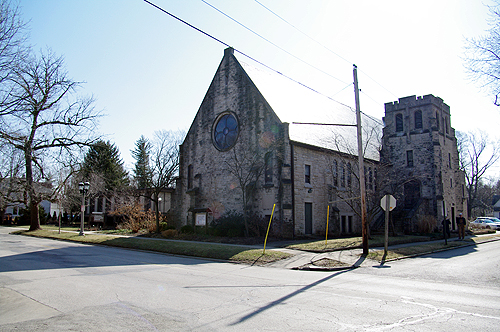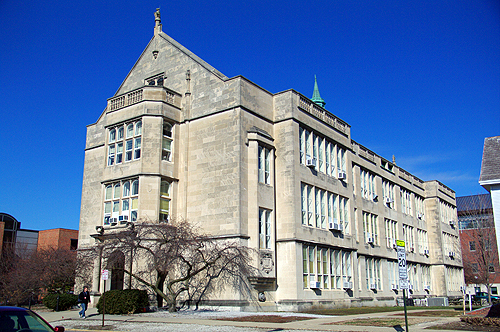Late Gothic Revival (1865-1880)
 |  |
The Gothic revival began in England in mid 18th century and was made popular America in the early part of the 19th century by the architect Alexander Jackson Davis. Davis’ 1837 book, Rural Residences - and subsequently Andre Jackson Downing’s hugely successful The Architecture of Country Houses (1850) - was responsible for the style’s popularity in much of rural American architecture. The early phase of this architecture is sometimes called Early Gothic Revival, the later phase, Late Gothic Revival, High Victorian Gothic, or Victorian Gothic. The High Victorian Gothic phase was principally applied to public and religious buildings, with few applications in residential buildings.
| |
Late Victorian Gothic buildings have walls of a variety of building materials and finishes including ashlar masonry, polychromed brickwork and wood, often extending uninterrupted into the gabled roof to promote a sense of verticality. Gothic motifs such as battlements, decorative brackets, finials, foliated ornaments, hood molding, label moldings, pinnacles with crockets, pointed arches, quatrefoils, trefoils, towers, turrets and wall dormers are frequently observed in the Late Gothic Revival style. A steeply pitched, highly decorated gable roof, ornamental chimney pots, and an occasional flat roof with crenellated and castellated parapets are typical elements. Window variations include decorative bay windows, lancet windows, and ogee arch windows (often with mullions and thin tracery), casement windows with diamond-shaped panes or small rectangular panes (sometimes of stained glass), and label moldings over ground floor windows. Doors are often elaborately paneled and set into a lancet arch, a recessed porch or under a door hood, with sidelight borders and label molding. | |
